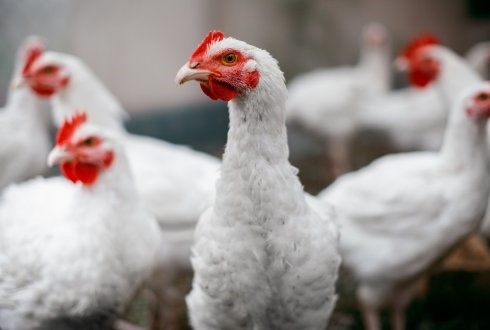Crossbred breeding value accuracy depends on genetic correlations
Accuracy of breeding value estimates may be higher using crossbred instead of purebred data, especially when genetic correlation is low.
October 18, 2019

In swine and poultry breeding programs, food animals are usually crossbred, while selection takes place in their purebred parental lines, researchers with the Wageningen University & Research (WUR) Animal Breeding & Genomics group explained.
Therefore, WUR researchers Pascal Duenk and Mario Calus said breeders need to estimate breeding values of purebred animals for the performance of their crossbred offspring.
The accuracy of such breeding values may be higher when crossbred instead of purebred data are used, especially when the genetic correlation between purebred and crossbred performance is low, Duenk and Calus said.
In a new study, the researchers used data from broiler chickens to show that using crossbred instead of purebred data was beneficial when the correlation was 80%, but not when the correlation was 96%.
Breeding values can be estimated with a technique called genomic prediction, the researchers said. Genomic prediction makes use of a reference population that consists of animals that have both phenotypes and marker genotypes available, and this information is used to estimate breeding values of selection candidates that only have marker genotypes available. Genomic prediction is especially useful for traits that cannot be measured on the selection candidates themselves, Duenk and Calus said.
Crossbred genomic prediction
Estimating breeding values for crossbred performance with genomic prediction can be done in several ways, the researchers said. One important decision breeders have to make is whether to use crossbred or purebred animals in the reference population.
The expectation is that the use of crossbred animals is preferred over purebred animals when the genetic correlation between purebred and crossbred performance is substantially lower than 100%, the researchers said.
When a crossbred reference population is used, the model can be improved even further by separating genotypes of the crossbreds into separate components, one for each parental line.
According to the researchers, a crossbred reference population resulted in similar or higher accuracy than a purebred reference population when the correlation between purebreds and crossbreds was 80%. In contrast, when the correlation was 96%, accuracy was lower with a crossbred reference population than with a purebred reference population.
Duenk and Calus concluded that that the benefit of using crossbred instead of purebred data for the accuracy of genomic estimated breeding values of crossbred animals is larger when the genetic correlation between purebreds and crossbreds is lower. However, breeders need to determine whether this difference in accuracy is large enough to justify the collection of data on crossbred animals, which may be costly and time consuming.
This research was supported by the Netherlands Organization of Scientific Research (NWO) and the Breed4Food consortium partners Cobb Europe, CRV, Hendrix Genetics and Topigs Norsvin. Data were provided by Cobb Europe.
You May Also Like



